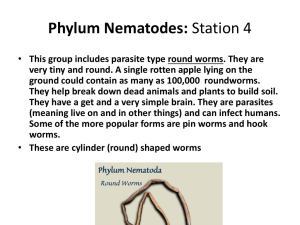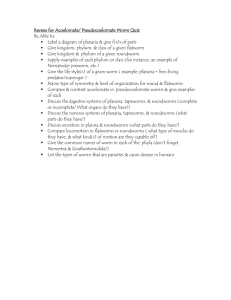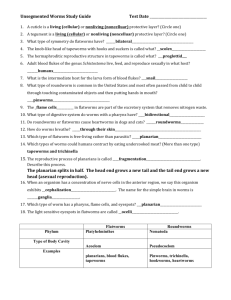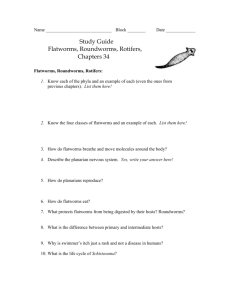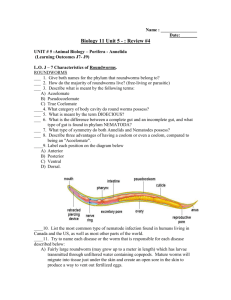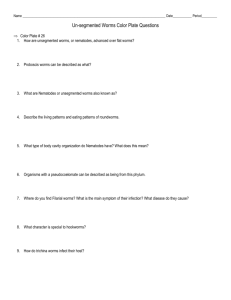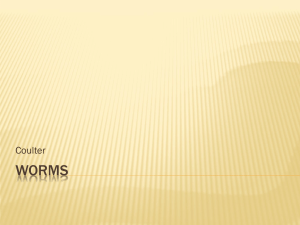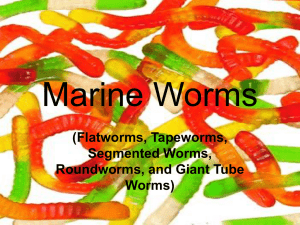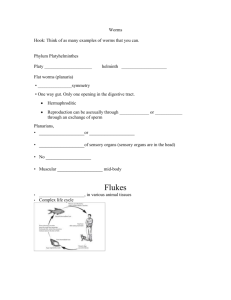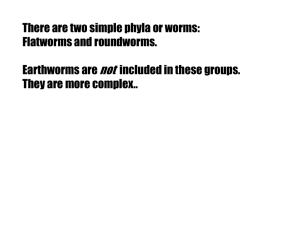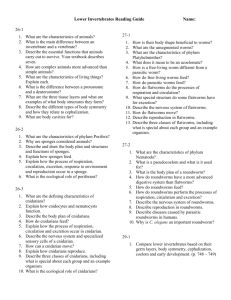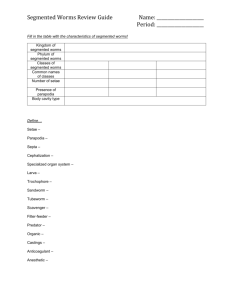Roundworms
advertisement
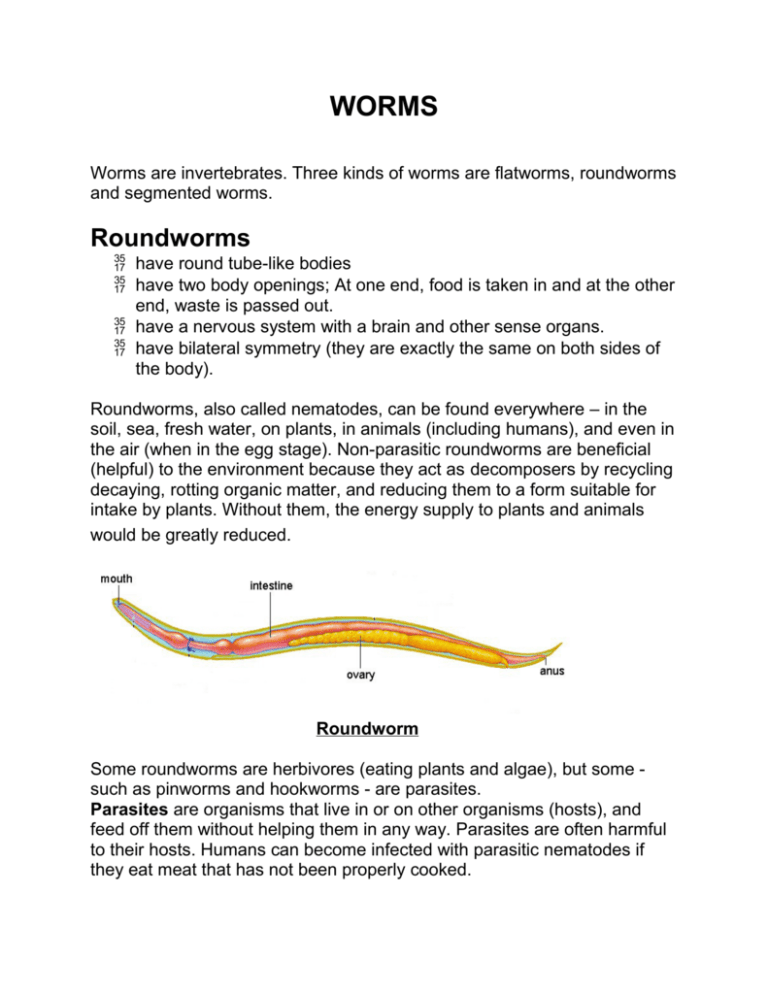
WORMS Worms are invertebrates. Three kinds of worms are flatworms, roundworms and segmented worms. Roundworms have round tube-like bodies have two body openings; At one end, food is taken in and at the other end, waste is passed out. have a nervous system with a brain and other sense organs. have bilateral symmetry (they are exactly the same on both sides of the body). Roundworms, also called nematodes, can be found everywhere – in the soil, sea, fresh water, on plants, in animals (including humans), and even in the air (when in the egg stage). Non-parasitic roundworms are beneficial (helpful) to the environment because they act as decomposers by recycling decaying, rotting organic matter, and reducing them to a form suitable for intake by plants. Without them, the energy supply to plants and animals would be greatly reduced. Roundworm Some roundworms are herbivores (eating plants and algae), but some such as pinworms and hookworms - are parasites. Parasites are organisms that live in or on other organisms (hosts), and feed off them without helping them in any way. Parasites are often harmful to their hosts. Humans can become infected with parasitic nematodes if they eat meat that has not been properly cooked. Flatworms have a flattened body have a triangular-shaped head and eye spots on the head have a digestive system have a simple nervous system have one body opening; they have no anus, so waste is excreted through the same opening that takes in food regrow parts (regeneration); If a planarian is cut into two pieces, the head part will grow a tail and the tail part will grow a head. Planarians, tapeworms and flukes are all flatworms. Tapeworms The tapeworm is a parasitic flatworm that has a long, flat body made up of a head, a neck, and a chain of segments (or sections). A chain can consist of 3 to more than 4 000 segments, and range in length from less than one inch (2.5cm) to more than 75 feet (23m). Adult tapeworms live in the intestines of vertebrate animals, including humans. They lay eggs in the digestive system of the host (the infected animal). If these eggs burrow themselves into tissues in our brains, hearts or kidneys, they will kill us. Flatworm Segmented Worms have bodies divided into many little segments (sections), like rings joined together have body parts for the nervous, digestive, excretory and circulatory systems repeated in each segment between the mouth and the anus. (This allows the worm a better chance to survive - by regeneration - if part of its body is cut off. have two body openings have bilateral symmetry The earth worm and leech are two types of segmented worms. The leech is a parasite which sucks blood. The earthworm lives in the soil. It makes the soil soft, and also enriches the soil with its waste, which comes from the dead leaves that it eats. Earthworm
